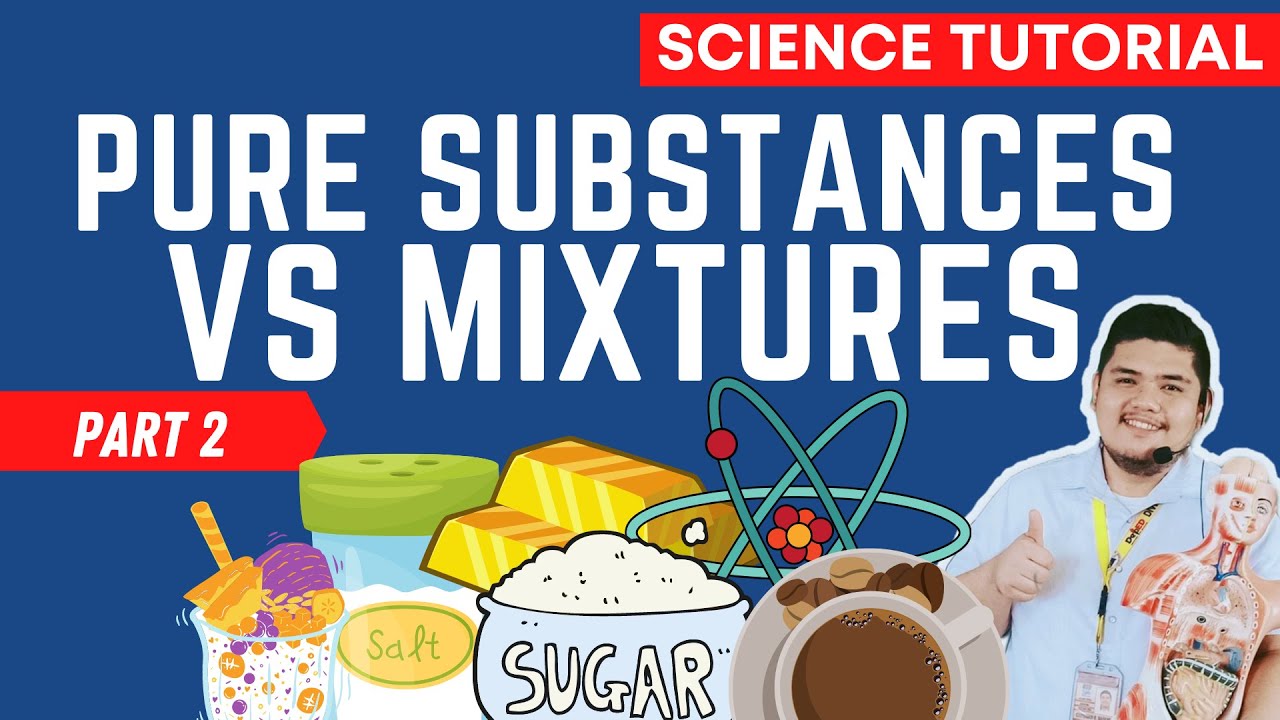Kook en Smeltpunten en Kook en Smelttrajecten
Summary
TLDRThis video script delves into the concepts of boiling points, melting points, and phase transitions, particularly focusing on the differences between pure substances and mixtures. It explains that pure substances have specific melting and boiling points, while mixtures consist of multiple components each with their own points, leading to a range of temperatures for phase changes. The script also discusses how to identify pure substances by their phase transition graphs, which show a consistent pattern with straight lines during phase changes. It highlights the importance of understanding these concepts for practical applications, such as cooking, where temperature control is crucial.
Takeaways
- 🔍 The video discusses the concept of boiling point, separation methods, phase transitions, and the difference between pure substances and mixtures.
- 🧪 It explains that pure substances have a specific melting and boiling point, while mixtures have a range of melting and boiling points due to the different components.
- 📚 The script encourages viewers to watch other videos for a better understanding of phase transitions and separation methods.
- 🔬 It uses an analogy of a ball to represent a molecule, explaining that pure substances consist of only one type of molecule, while mixtures have multiple types.
- 🌡️ The video describes the process of separating a mixture to obtain a pure substance, which results in a single type of molecule being visible.
- 📈 The script mentions that phase diagrams can be used to represent the phase transitions of substances, showing the relationship between temperature and state.
- 📊 The graph of a pure substance during phase transition will have straight lines, indicating a constant temperature during the transition.
- 🔥 The video points out that during the phase transition, the substance absorbs energy to change states, which is why the temperature remains constant until the transition is complete.
- 🍲 It uses the example of cooking to illustrate the concept of phase transitions, such as boiling potatoes in water, and the importance of adjusting heat to achieve the desired result.
- ⚠️ The script warns against the inefficiency of keeping the heat too high during cooking, as it does not speed up the process.
- 📝 The video concludes by emphasizing the importance of understanding the differences between pure substances and mixtures in terms of their phase transition characteristics.
Q & A
What is the main topic of the video?
-The main topic of the video is about the boiling point, melting point, and the distinction between pure substances and mixtures in the context of phase transitions.
What does the video aim to teach the viewers?
-The video aims to teach viewers about the concepts of pure substances, mixtures, their boiling and melting points, and how to differentiate between them using phase diagrams.
What is the difference between a pure substance and a mixture?
-A pure substance consists of only one type of molecule, while a mixture is composed of multiple substances, each with its own unique molecules.
What are the characteristics of a pure substance during phase transitions?
-During phase transitions, a pure substance has a specific melting and boiling point at which it changes state, and these points are represented by a constant temperature on a phase diagram.
How does the melting and boiling behavior of a mixture differ from that of a pure substance?
-A mixture does not have a single melting or boiling point; instead, it has a range of temperatures over which it transitions from solid to liquid or liquid to gas.
What is the significance of the phase diagram in understanding phase transitions?
-A phase diagram helps visualize the temperatures and pressures at which different phases of a substance (solid, liquid, gas) occur, making it easier to understand the behavior of substances during phase transitions.
What does the video mention about the energy required during a phase transition?
-The video mentions that during a phase transition, such as melting or boiling, the substance absorbs energy without a change in temperature until the transition is complete.
Why is it inefficient to keep the heat high when cooking, as mentioned in the video?
-It is inefficient because once the substance reaches its boiling point, additional heat does not increase the temperature but only serves to maintain the boiling state, wasting energy.
What is the practical implication of understanding the boiling and melting points of substances?
-Understanding the boiling and melting points is crucial for various applications, such as cooking, where knowing these points can help control the process and achieve desired outcomes without wasting energy.
How can the video's explanation of phase transitions be applied in real-life scenarios?
-The explanation can be applied in scenarios like cooking, where knowing the boiling point of water can help in cooking food properly, or in industrial processes where phase transitions are used for material processing.
What is the importance of recognizing whether a substance is a mixture or a pure substance in terms of phase transitions?
-Recognizing whether a substance is a mixture or a pure substance is important because it determines whether it has a single boiling or melting point or a range of temperatures over which it transitions between states.
Outlines

This section is available to paid users only. Please upgrade to access this part.
Upgrade NowMindmap

This section is available to paid users only. Please upgrade to access this part.
Upgrade NowKeywords

This section is available to paid users only. Please upgrade to access this part.
Upgrade NowHighlights

This section is available to paid users only. Please upgrade to access this part.
Upgrade NowTranscripts

This section is available to paid users only. Please upgrade to access this part.
Upgrade NowBrowse More Related Video
5.0 / 5 (0 votes)





